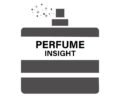The art of making perfumes is an art in itself and also a functional art form prudently combined with a mix of science and business. What comes common is the fact that quality control (QC) forms an integral part of the entire process of manufacturing the scent and emphasizes that each and every bottle produced meets the desired standards of quality, safety and consistency. This paper examines in details quality control processes during perfume production, its significance, the methods of quality control and the impediments to its implementation in the manufacturing processes.
The scale of Quality Control in Perfumery
There are many reasons necessary for quality control in perfume manufacturing units.
Consistency: The customer’s willingness or ability to turn to other brands is affected by the organization’s notoriety in every given sector. All perfumes should have a consistent scent profile and come out slightly different in performance.
If any outlying fragrance comes out at production this may create customer disappointment and tarnish the prospects of product.
Safety: One of the major concerns is because allergens / irritants may be contained in many of the ingredients employed in the formulation of vehicles for perfumes. This is where Quality Control factors in and seeks to ensure that these products are used safely.
Regulatory Compliance: It is essential that perfumes meet standards for labeling, ingredient safety, and environmental impact anytime regardless of the geographic location. These are some of the areas which Quality control makes its significance known.
Brand Integrity: Client loyalty and confidence are fostered as a result of quality management among the clients who aspire to purchase the product. Clients are able to place faith in a brand that offers high quality goods and sells at reasonable prices. Regular quality control inspections allow manufacturers to maintain their reputations.
The procedure for quality control:
The QC process for perfume manufacturing includes a number of processes that can be broadly divided into:
Assessment of Raw Materials: Before production begins, every raw material—essential oils, scent compounds, solvents, and fixatives—must be thoroughly evaluated.
This includes: supplier audits. Manufacturers usually perform audits on their suppliers to ensure that the raw materials meet relevant quality standards.
Batch Test: Every batch of raw materials is tested for purity and potency. This not only means testing for impurities but also confirming fragrance concentration levels.
Formulation Testing: The formulating process kicks off only after raw materials have been verified. Quality control, in this regard, is done here. They then need to create multiple prototypes to explore different scent profiles.
Stability Tests: The formulations are tested to check how stable they are for variable temperatures or light exposure. This also allows us to be able to notice changes that may occur in the fragrance or color.
Process Control: The blending and bottling are done using standardized procedures, so every batch is made under a similar set of conditions. In-process testing: Quality metrics such as pH, specific gravity, and viscosity are tested on samples of the production batches on a regular basis.
Sensory Evaluation: Arguably the most subjective yet most important part of quality control is sensory evaluation, which includes:
Expert Panels: Evaluators test the fragrance for its olfactory aspects, lasting time on the skin, and overall impression. Which often means using blind tests to avoid bias.
Got to love consumer testing. As a result, some even do consumer panels where they get feedback on whether a new scent works with the appropriate demographic.
Final Quality Assessment: Once the perfumes are ready for market, the final quality check will be done under which:
Labeling: Making sure all labeling is compliant and accurate regarding the ingredients and recommended use.
Packaging Inspection: An Evaluation of Packaging Leakage Prevention and Leakage Prevention Packaging Aesthetic
Challenges in Quality Control: Quality control is essential, but it has some challenges: The complexity of the formulations: Many modern perfumes consist of complex combinations of ingredients, which is difficult to replicate batch after batch.
Ingredient Variability: Environmental factors can affect a natural ingredient in ways that may render its scent consistency an elusive quality.
Evolving Consumer Taste: Trends are changing at a fast pace, and keeping the quality right while adapting to the choice of the consumer is quite a difficult task.
Innovation in Quality Assurance Technology: Technology Adoption Is Revolutionizing Quality Control Process In Perfume Industry Automation: It can help in increasing the speed and accuracy of the test procedure while lowering human error.
Data Analytics: Manufacturers can leverage big data and analytics tools to track patterns and preferences of end consumers, so they can develop their formulations and production processes more strategically. Artificial Intelligence and Machine Learning: AI and machine learning are being evaluated as potential methods for the prediction of scent profiles, and some even go as far as proposing they perform better than human sensory analysis.
Conclusion:
The process of identifying and instructing where fragrance products can go wrong is a dynamic aspect of quality control in perfume manufacturing. Every single step, from initial raw material assessment to final evaluations within a perfume, is vital to ensure customers receive top-notch, safe, enjoyable fragrances. With the industry growing, adapting to technology will be essential to tackling hurdles ahead and filling the shifting needs of global fragrance devotees. This adds to the loyalty and trust of consumers showing towards the brand; thus, by following these quality control techniques, perfume manufacturers can better hold on to their commitment towards their excellence!!

